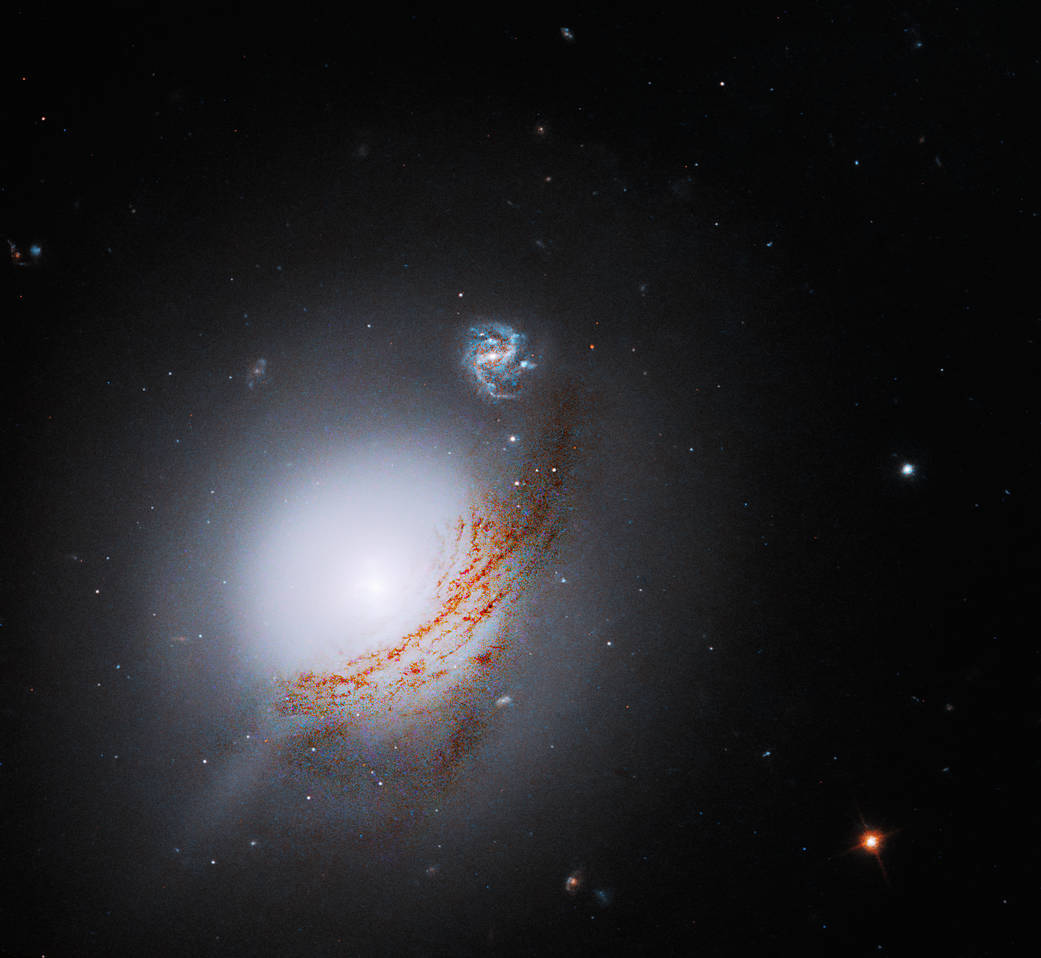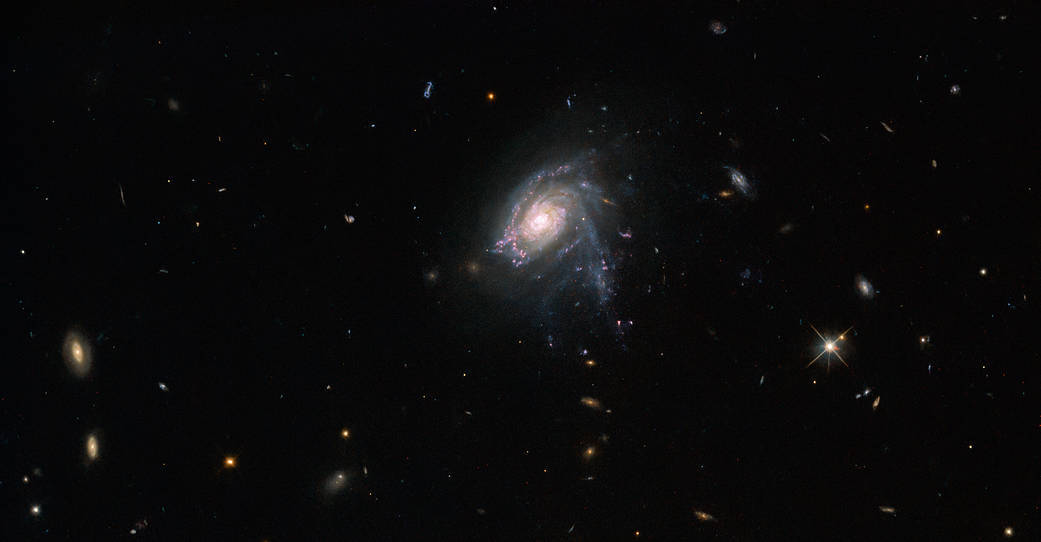7.05.2023

The lenticular galaxy NGC 5283 is the subject of this NASA Hubble Space Telescope image. NGC 5283 contains an active galactic nucleus, or AGN. An AGN is an extremely bright region at the heart of a galaxy where a supermassive black hole exists. When dust and gas fall into the black hole, the matter heats up and emits light across the electromagnetic spectrum.
NGC 5283 is a Seyfert galaxy. About 10 percent of all galaxies are Seyfert galaxies, and they differ from other galaxies that contain AGNs because the galaxy itself is clearly visible. Other AGNs emit so much radiation that they outshine or make it impossible to observe the structure of their host galaxy!
Hubble observed this galaxy as part of a survey for a dataset about nearby AGNs, which will serve as a resource for astronomers investigating AGN physics, black holes, host galaxy structure, and more.
Image Credit: NASA, ESA, A. Barth (University of California - Irvine), and M. Revalski (STScI); Processing: Gladys Kober (NASA/Catholic University of America)
Quelle: NASA
+++
Hubble Views Striking Starry Tendrils

The jellyfish galaxy, JO175, appears to hang suspended in this image from the NASA/ESA Hubble Space Telescope. This galaxy lies over 650 million light-years from Earth in the appropriately named constellation Telescopium and was captured in crystal-clear detail by Hubble’s Wide Field Camera 3. A handful of more distant galaxies are lurking throughout the scene, and a bright four-pointed star lies to the lower right side.
Jellyfish galaxies get their unusual name from the tendrils of star-forming gas and dust that trail behind them, just like the tentacles of a jellyfish. These bright tendrils contain clumps of star formation and give jellyfish galaxies a particularly striking appearance. Unlike their ocean-dwelling namesakes, jellyfish galaxies make their homes in galaxy clusters, and the pressure of the tenuous superheated plasma that permeates these galaxy clusters is what draws out the jellyfish galaxies’ distinctive tendrils.
Hubble recently completed a deep dive into jellyfish clusters, specifically the star-forming clumps of gas and dust that stud their tendrils. By studying the origins and fate of the stars in these clumps, astronomers hoped to better understand the processes underpinning star formation elsewhere in the universe. Interestingly, their research suggests that star formation in the disks of galaxies is similar to star formation in the extreme conditions found in the tendrils of jellyfish galaxies.
Text credit: European Space Agency (ESA)
Image credit: ESA/Hubble & NASA, M. Gullieuszik and the GASP team
Quelle: NASA
